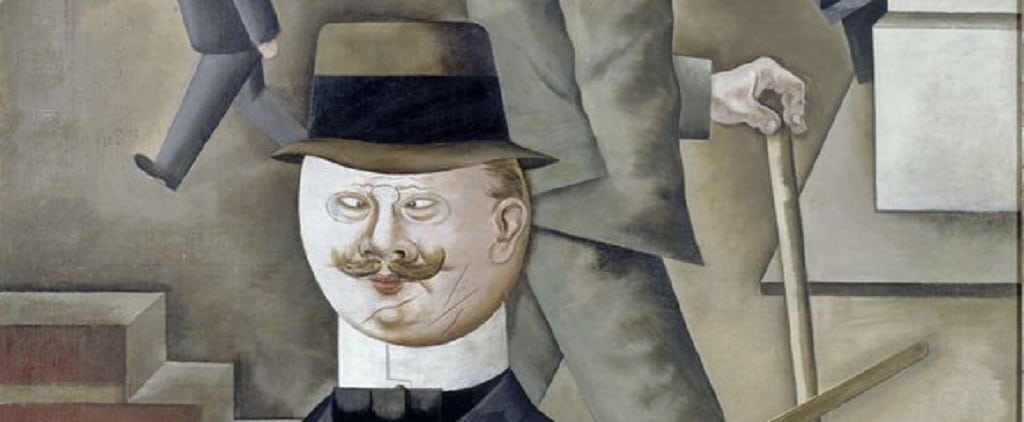Grey Day by George Grosz - while I have seen the reproductions of it before, it was only a couple of weeks ago when I saw it at the exhibition.
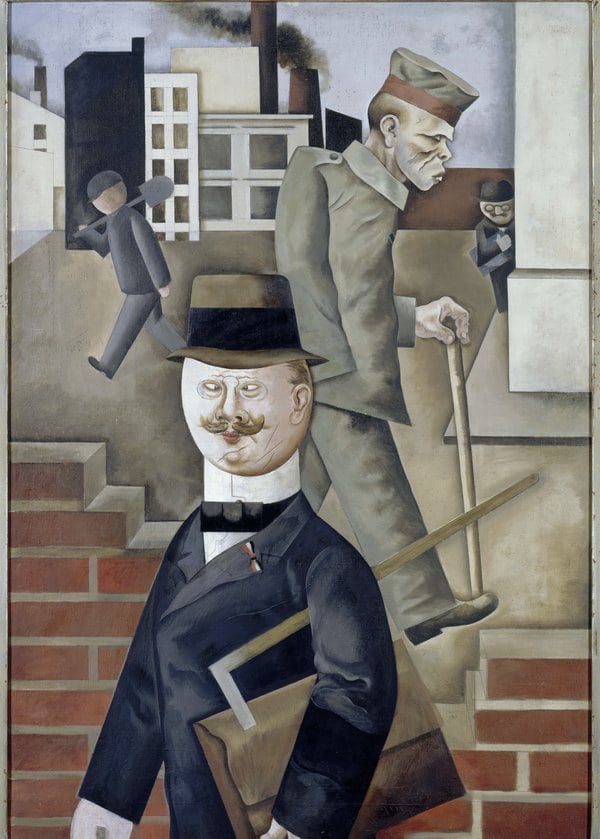
This is not word to word what the white museum label next to it read, but like pretty much any other essay on it you can google, the explanation given was focusing mainly on the juxtaposition of the 'well off bureaucrat' against the gaunt figure of a war veteran. Some articles also mention other characters: the faceless worker and the bespectacled men peeking around the corner, but that's usually about it.
What attracted my attention though were the distinctive scars on bureaucrat's face. My first thought was that it could be a hint that the man is a veteran himself, and so instead of a blatant conflict between the better off and the forgotten we are looking at how different life can still be for people who once could be freezing in the same trench. Yet the fact that there are multiple similar scars, all clustered at the lower part of his cheek, makes it almost certain he got them on a fraternity duel.
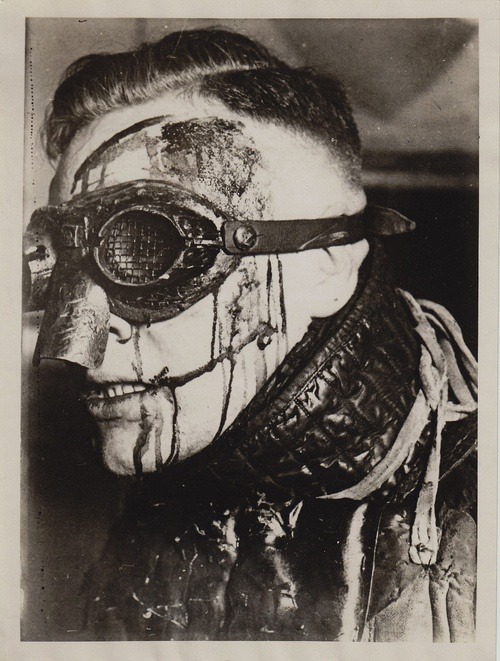
That tradition, once popular enough among male students in German speaking parts of Europe to become a memorable cultural trope, was basically young men striking each other's faces with blades while wearing only essential protection to cover their eyes and noses. Getting a few nasty looking but not life threatening scars in the process was not a concern, but rather a desirable goal - the opponents weren't supposed to move around much dodging the attacks.
Similar scars can be seen on the faces of other Grosz's characters, but unlike with Grey Day, those people are mostly unambiguous Nazi warmongers. Their scars are there for the same reason as the swastika pins (which are, of course, also helpfully in place) and along with other unmistakable visual attributes they leave no room for other, more charitable interpretations:
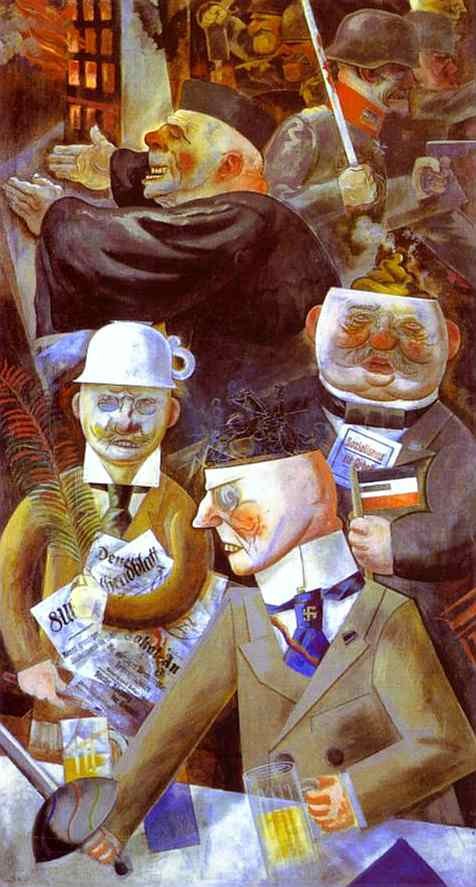
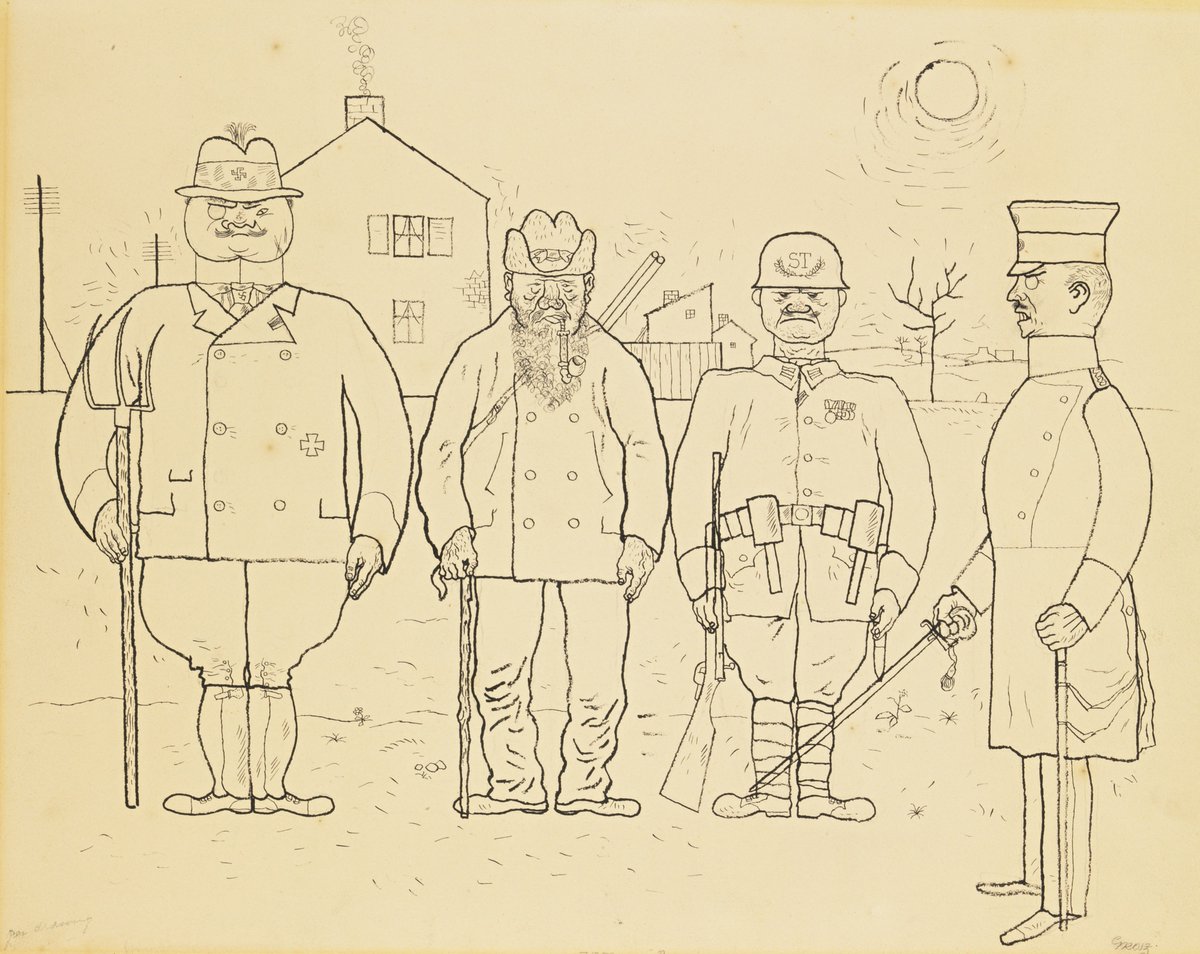
Compare that to the goofy cross eyed figure of the bureaucrat from Grey Day. If it wasn't for the scars, he is no way threatening - just ignorant, perhaps, of what's going on behind the unfinished wall.
Yet it is not just the scars. He is also wearing a black, white and red ribbon - the colours of the monarchy and not the Weimar Republic that replaced it. This details more prominent and visible to us today, yet I believe that it was specifically paired with the scars so the the meaning of both is amplified, eliminating the possibility of that they might not be carrying a message.
It seems unlikely that the ribbon is only here to signal that the bureaucrat had simply been decorated for his war service, as there doesn't seem to be a ribbon in the same colours and stripe proportions among the German awards of that era.
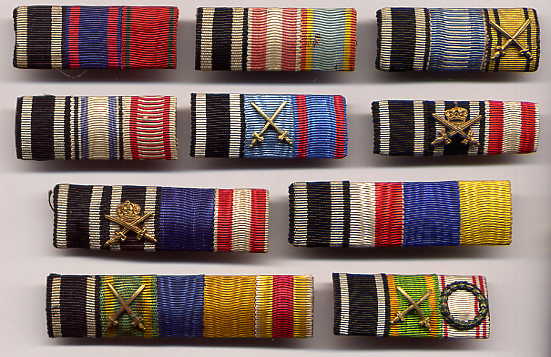
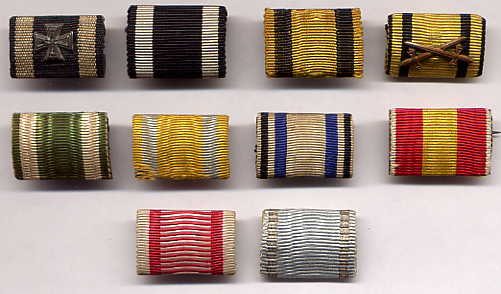
It is a political message then, right in our faces. Around that time (early 1920s) DNVP (which flag and colours were identical to that of the German Empire) was a political home for different kinds of right wing opposition, including the future Nazi party supporters. It wouldn't be a stretch to suggest that someone who once enjoyed fraternity duels (it takes a certain type of people to find pleasure in such exercises) was also later in life not in favour of the 'decadent' Weimar state and then was likely an enthusiastic member of Nazi institutions or SS military.
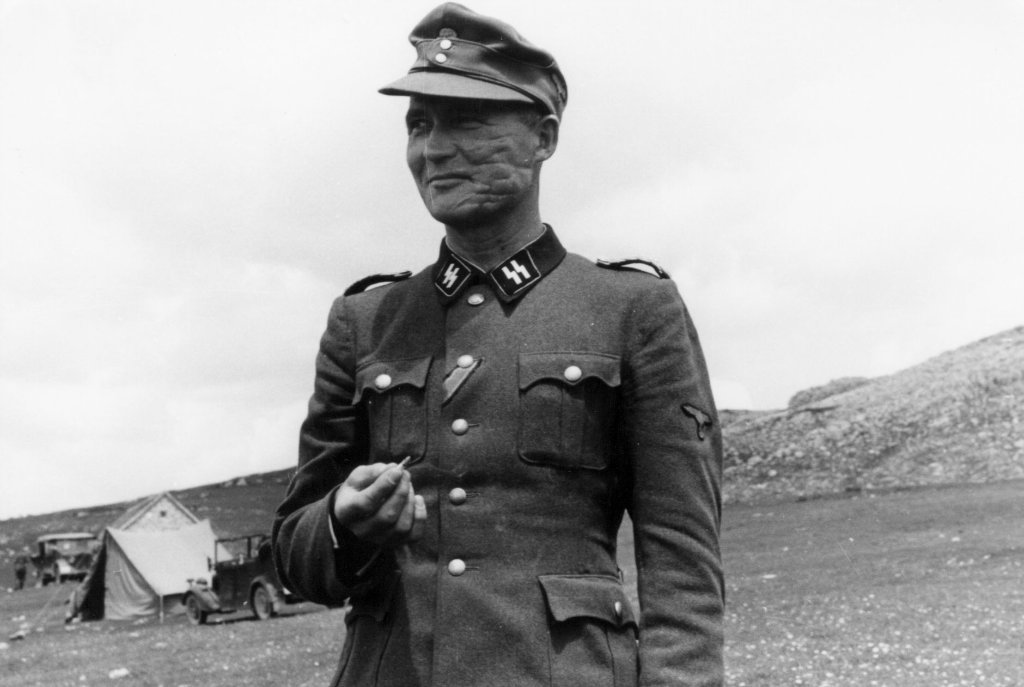
***
Among the numerous Grosz's drawings and sketches from the same period there is one also finished in 1921, which very much resembles more famous Grey Day. While most of the figures are recognisable, the 'bureaucrat' is not. The face scars are still here (although they are less prominent and can be mistaken for the skin folds), but the facial features are exaggerated in a different way, radiating aggression and menace instead of the rounded goofiness.
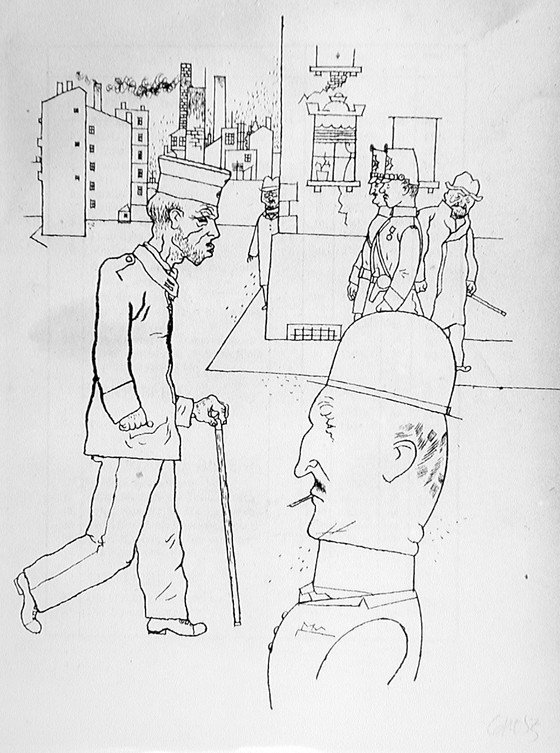
If the assumption that the sketch was completed before the painting (which is how it usually happens) is correct, the transformation of the bureaucrat was intentional as well, and artist's first thought was indeed to make it more straightforward, with a threatening looking man naturally being a more obvious reference.
So the transformation of the character is also a part of the message Grey Day sends.
We are now suddenly looking at a very different artwork. It doesn't simply expose inequality and the harsh realities of post-war life in Germany (the faceless worker / the forgotten veteran / the indifferent civil servant). More than just that, it also makes a prediction: we are watching a new war in the making, as the person confident and consistent in his beliefs, with the grim reality readily confirming them for him, marches into the future. A middle class educated office worker, he seems harmless now with his briefcase and the ruler, but it's him who is the architect of the new reality, even if he isn't yet recognised as such. One of the many who are going to ruin it for everyone.
Quite a prediction, as for 1921.
